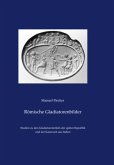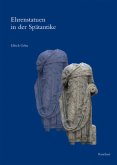The second volume of Palilia shows antiquities collected by members and patrons of the German Archaeological Institute, primarily in the early years after its foundation in 1829, and kept at the institute to this day. Greek-Roman marble works and Etruscan sculptures make up the largest part of the collection; there are also numerous inscriptios of historic significance, and even some Egyptian pieces.
Hinweis: Dieser Artikel kann nur an eine deutsche Lieferadresse ausgeliefert werden.
Hinweis: Dieser Artikel kann nur an eine deutsche Lieferadresse ausgeliefert werden.
"Toutes les contributions de ce volume, dont la couverture reproduit en couleur une peinture de l'Oppius encore énigmatique, sont instructives chacune à leur manière, mais sans renouveler fondamentalement notre vision des villes et notamment de Rome en tant que «cosmopole» : un sujet que n'a pas abordé le colloque - apparemment, du moins - mais qu'impliquait (je pense) la question des images et des espaces, "Bilder und Räume". Qu'il s'agisse, en effet, d'architecture, de statuaire ou de reliefs cultuels, l'exotisme religieux a notablement modifié la physionomie de l'Vrbs. Mais, cent ans après la 1re éition des "Religions orientales dans le paganisme romain" de F. Cumont, la chose est évidemment bien trop connue pour que l'on juge utile d'y insister..."
In: Revue Archéologique. (2007) 2. S. 401-403.
In: Revue Archéologique. (2007) 2. S. 401-403.








